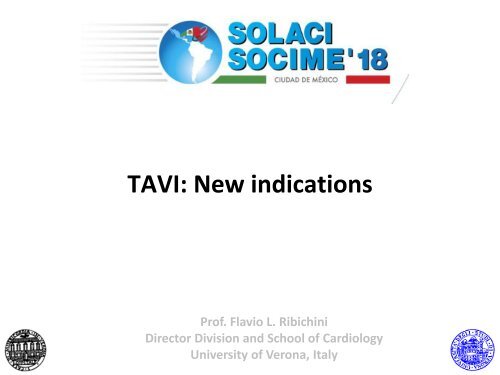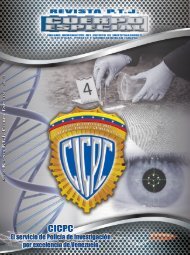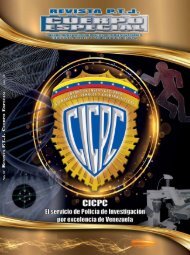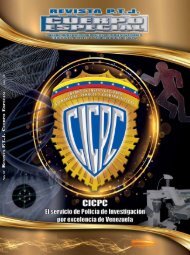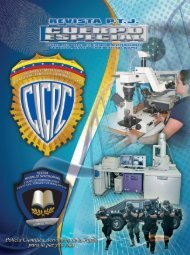Ribichini
You also want an ePaper? Increase the reach of your titles
YUMPU automatically turns print PDFs into web optimized ePapers that Google loves.
TAVI: New indications<br />
Prof. Flavio L. <strong>Ribichini</strong><br />
Director Division and School of Cardiology<br />
University of Verona, Italy
No conflict of interest<br />
Proctor for Edwards and Medtronic<br />
Prof. Flavio L. <strong>Ribichini</strong><br />
Director Division and School of Cardiology<br />
University of Verona, Italy
New indications now: the intermediate risk
New indications now: the intermediate risk
TAVI: new indications in the near future<br />
Low-risk AS patients<br />
Asymptomatic AS patients
TAVI: new indications (off label)<br />
Pure, non-calcific aortic regurgitation<br />
Bridge o Heart Mate or heart transplant<br />
AS and aortic dissection<br />
AS and associated mitral valve disease<br />
Bicuspid aortic valve<br />
Mitral and tricuspid VIV<br />
Aortic VIV and severe high-risk CAD
Emergency TAVI for severe aortic regurgitation –<br />
procedural and technical considerations<br />
We report 14 consecutive inoperable patients with non-calcific, pure Aortic Regurgitation and<br />
advanced heart failure treated with emergency percutaneous trans-femoral implantation with<br />
self-expandable CoreValves at our institution, between July 2011 and February 2018.<br />
✓ Computed tomography scan (CTS) of the aortic root was performed in 11 patients to obtain<br />
accurate measures of the aortic annulus and root.<br />
✓ Extremely unstable hemodynamics in 3 patients prevented CTS, and the valve sizing was<br />
decided by intra-procedural trans-esophageal echocardiography (TEE).<br />
✓ The immediate and long-term clinical outcome was prospectively assessed according to the<br />
VARC-2 criteria for device success and safety.
Pure AR in extensive aortic dissection<br />
Two cases of massive residual AR after aortic valve reconstruction performed during the replacement of the ascending aorta due to<br />
acute type 1 aortic dissection, with a residual type III dissection from the aortic arch to the iliac arteries.
Diagnostic catheterization
Aortic Dissection<br />
as seen with the<br />
intra-procedural IVUS
Pure AR in extensive<br />
aortic dissection
Pure AR and aortic Root Aneurysm<br />
Patient’s and procedural characteristic<br />
Pt #2 was implanted electively two 31mm CoreValves in a large aortic root aneurysm, as a planned strategy. The first 31mm CoreValve was<br />
used for anchoring a second 31mm device with optimal final result and complete resolution of the AR.<br />
CT scan of pt #2<br />
• c-d) dilated ascending aorta (55mm);<br />
• e) diameters perimeter and area of the aortic annulus;<br />
• f) sagital view of its aortic valve without calcifications;<br />
• g) sagital view of a thoracic CT scan after the implantation of two<br />
CoreValves in the aortic annulus;<br />
• h) frontal view with the two valves in place.
CT scan at level of the aneurysm of the<br />
Valsalva simus (56mm)
“Valve in valve” implantation of two self-expandable trans-catheter aortic<br />
valves to exclude aortic root aneurysm and treat massive aortic regurgitation.<br />
75 years old male<br />
Massive aortic<br />
insufficiency,<br />
LVEF 50%<br />
Large aneurysm of<br />
the aortic root.<br />
Two previous<br />
cardiac surgeries:<br />
CABG and plastic of<br />
the aortic valve.<br />
Aortic dissection<br />
with implantation of<br />
a Dacron tube in<br />
ascending aorta.
First CoreValve 31mm in the ascending aorta<br />
Valve implantation in the conventional<br />
possition
After 5 years the patient is in NHYA class I
CT scan of the aortic root showing the<br />
valve in valve in correct possition.
Pure AR secondary to Heart Mate or as bridge to<br />
transplant<br />
Heart-Mate II<br />
CT scan showing non-calcified aortic valves<br />
All of them presented multiorgan failure at<br />
the time of TAVI.<br />
One patient had an extremely dilated and<br />
calcified homograft<br />
Now performing TAVI BEFORE Heart Mate<br />
to avoid emergency treatment
Patient survvived, underwent heart transplantation and is alive after 6 years
Intra-op TEE showing AR pre and post<br />
Heart Mate<br />
After the activation of the LVAD<br />
the CO decreased from 3.0l/min<br />
to 2.0 l/min due to the worsening<br />
of the AR
2014: Traumatic aortic aneurysm treated with<br />
Thoracic Endovascular Aortic Repair (TEVAR)<br />
Before…<br />
After TEVAR…
10/2017: Endoleak type 1a at the level<br />
of aortic arch with growth of aneurysm
10/2017: Complete resolution of the endoleak with 2nd endovascular prothesis<br />
(after debranching of the supraortic trunks)<br />
Anastomosis with<br />
supraortic trunks<br />
2nd endovascular prothesis<br />
Calcifications on the aortic valve
11/2017: worsening of aortic stenosis<br />
For episodes of chest pain and dyspnea<br />
(NYHA III) echocardiography was<br />
performed with evidence<br />
of severe aortic stenosis (Peak<br />
Gradient 62mmHg, Mean Gradient 42<br />
mmHg)<br />
The aortic stenosis was confirmed at the heart catheterization<br />
with a peak to peak gradient of 45 mmHg.
PRE-TAVI Evaluation<br />
At the CT scan evidence of an horizontal aorta<br />
with a LVOT diameters of 27,9 mm and 22,1 mm,<br />
perimeter of 79,7 mm, area of 479,5 mm 2 and no<br />
signs of residual dissections.<br />
A CoreValve Evolute R 29 mm was chosen.
1/2018: TAVI Procedure<br />
Evidence of a false lumen due to<br />
an undiagnosed Type 1 aortic<br />
dissection during aortography<br />
prior to TAVI: The 5F pigtail<br />
catheter easily entered a large<br />
false lumen at the level of the<br />
aortic root/ascending aorta<br />
while negotiating the noncoronary<br />
Valsalva synus.
1/2018: TAVI Procedure<br />
5Fr Amplatz AL-1 was used to opacify the true lumen and direct<br />
the straight soft 0.35’’ angiographic wire through the aortic valve<br />
into that horizontal aortic root.<br />
After crossing the aortic valve, thus confirming the correct<br />
placement of the wire, a 2 nd supportive 0.35’’ wire was placed into<br />
the LV, to act as a rail for the CoreValve through the endoprostheses<br />
and the horizontal aortic root.
Before deployment of the CoreValve the buddy wire was removed<br />
from the LV to avoid unwanted trapping and possible<br />
dislodgement of the valve during retrieval<br />
1/2018: TAVI Procedure<br />
Final angiogram showing satisfactory position of the<br />
CoreValve, no relevant aortic regurgitation and no acute aortic<br />
damages or clear images of dissection left.
Post-TAVI CT-SCAN<br />
Evidence of dissection<br />
of ascendent aorta<br />
partially covered at the<br />
entry site by the Evolute<br />
R.<br />
10 months f-up, OK.
Associated mitral valve disease
Male 83. Mitral para-valvular leak<br />
1 2<br />
Four chamber echo view showing the mitral bioprosthesis<br />
Trans-esophagic image showing severe mitral peri-prosthetic leak<br />
EDV pre intervention showing severe LV chamber diatation
…and severe aortic valve regurgitation<br />
Short and<br />
long axis<br />
images and<br />
color Doppler<br />
(long axis and<br />
M mode)<br />
showing<br />
severe aortic<br />
regurgitation.<br />
The aortic<br />
valve has mild<br />
calcifications<br />
without<br />
gradient
Mitral valve intervention<br />
Release of the vascular plug AGA III 10x5mm<br />
Percutanaous occlusion of the mitral peri-valvular leak
Aortic valve intervention<br />
Percutaneous Trans-catheter Aortic Valve Implantation<br />
CoreValve in place with a trivial<br />
residual aortic insufficiency
TTE at discharge<br />
Trans-aortic Doppler before discharge<br />
Residual mean aortic gradient: 9 mmHg.<br />
4 years<br />
F-up in<br />
NYHA<br />
class I
Male, 77 yo, severe AVS and severe MR cord rupture<br />
Percutaneous Trans-catheter Aortic Valve Implantation
Male, 77 yo, severe AVS and severe MR cord rupture<br />
Percutaneous Trans-catheter Mitral Valve Repair
Male, 77 yo, severe AVS and<br />
severe MR cord rupture
VIV of a tricuspid bioprosthesis<br />
- Male born in 1954, aged 62 at the time of referral.<br />
- Rheumatic fever in childhood<br />
- Chronic AF since the age of 25 and since then in OAC<br />
- 1981: Aortic and mitral valve replacement (mechanic valves)<br />
- 2001: Severe tricuspid regurgitation: Perimount Magna<br />
31mm bioprosthesis.<br />
- COPD with recent worsening, in domiciliary oxygen therapy<br />
- Several recurrent TIA of embolic origin<br />
- Severe right heart failure with anasarca
Thoracic angio CT scan<br />
Right atrium volume= 1300-1400 ml
Balloon inflation and valve release<br />
N
Operative result<br />
Intra-operative mean<br />
gradient 3.2 mmHg<br />
Prosthesis in-place
Pre-discharge echographic control: 4 chambers<br />
Mean gradient: 4.1 mmHg<br />
5 years f-up: uneventful with normal function of the valve
Evolut R 34 in Bicuspid<br />
Aortic Valve<br />
76 y o female<br />
Normal coronary arteries<br />
Higly fragile<br />
Severe reumatoid artritis on steroids<br />
CKD (eGFR 30)<br />
Several major bleedings<br />
TF TAVI performed February 10 2017
Calcium<br />
distribution<br />
Implanting view
The valve
• Elective follow-up at 12 months<br />
• Clinically uneventful<br />
• CT scan 12/02/2018<br />
• TTE 31/01/2018
Valve at LVOT and lack of contact to the annulus<br />
Valve at the leaflets @10mm (raphe)
VIV on high risk stentless bioporsthesis and low<br />
coronary ostia<br />
89 years old female<br />
Previous AVR in 2000 with Stentless Sorin 23mm<br />
Well being until beginning of 2015<br />
Rapid progression to NYHA class III-IV<br />
TT echocardio: (oct 2015) mean aortic gradient 58mmHg<br />
Normal coronary arteries<br />
Preserved LV function (EF 66%)<br />
Moderate renal dys-function (eGFR 45)
CT scan and type of valve<br />
CT scan showing the distance beween the aortic valve<br />
annulus and the origin of the coronary arteries (4.7<br />
and 5.4mm)<br />
SORIN Pericarbon Freedom 23mm<br />
stentless aortic bio-prosthesi (a),<br />
and the surgical technique of valve<br />
sewing very close to coronary ostia (b)<br />
a<br />
b
Two BMW guide wires in the coronaries<br />
Left femoral access for the<br />
valve sheath.<br />
The rigth femoral artery<br />
was used for the left<br />
coronary artery guiding<br />
catheter.<br />
The right coronary guiding<br />
catheter was advanced<br />
through the right radial artery
Rapid pacing and<br />
valve inflation
Implantation of the stent in the RCA first and then in the left main
Final aortic<br />
angiogram
Complete normalization of the<br />
rhythm, ECG QRS width, and<br />
blood pressure after implantation of the<br />
two stents.<br />
Aortic angio shows the XT Sapien 3<br />
valve in place, and patent RCA and left<br />
coronary artery.<br />
Intra-operatory TT echo shows no<br />
residual aortic leak in diastole (a)<br />
Residual trans-valvular<br />
PG (18mmHg) (b).<br />
a<br />
b<br />
The patient<br />
had<br />
uneventful<br />
Hospital stay<br />
and was<br />
discharged on<br />
day 6 on DAPT<br />
advised for 6
Considerations<br />
Currently available TAVI technology allows<br />
treatment of a wide spectrum of complex heart<br />
valvular disease, in particular in patients that have<br />
undergone previous cardiac surgery and present<br />
high risk of re-operation.<br />
The success of the procedure is based on a<br />
thougthful planning of the strategy before hand.


